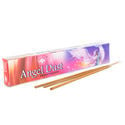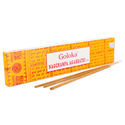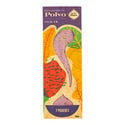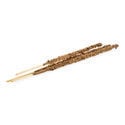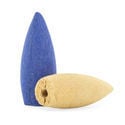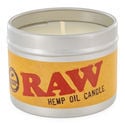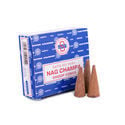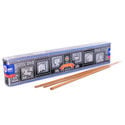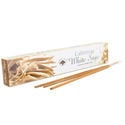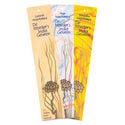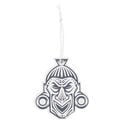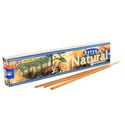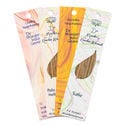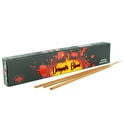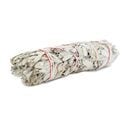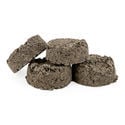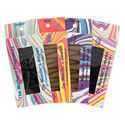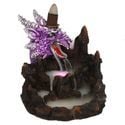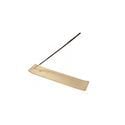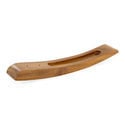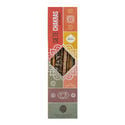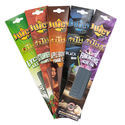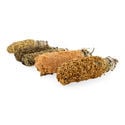The Complete Guide To Incense: Origins, Types And Benefits
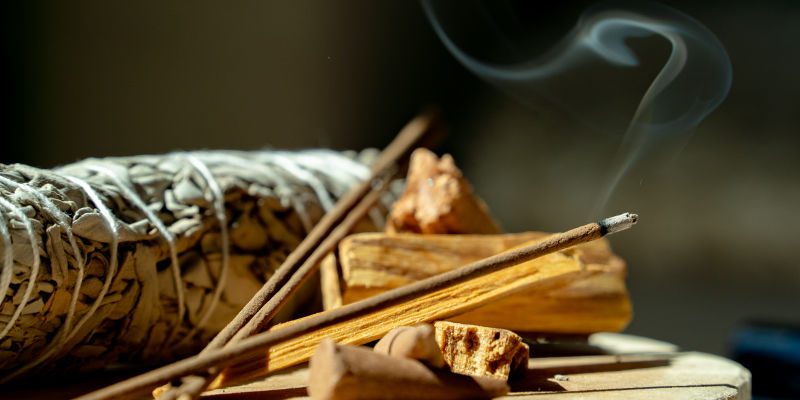
Burning incense is a practice that connects civilisations, cultures, the ancient and the modern world. We dig into its origins, how it's made, different types of incense, and how burning incense could benefit you.
You light the tip, then blow out the flame. Within minutes, you're surrounded by a thick, earthy fragrance. It's a little bit sweet, a little bit musky. You breathe it in and your whole body relaxes.
Where are you? In a temple, a yoga studio, the comfort of your own couch? What are you doing? Meditating, smoking weed, playing guitar?
There are hundreds of answers to these questions, but one thing's certain: you're burning incense.
What is incense?
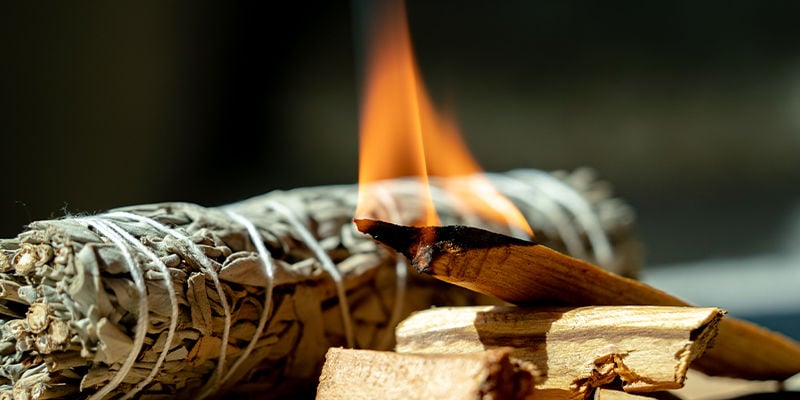
The word "incense" comes from the Latin "incendere", meaning "to burn". In short, incense is an aromatic substance that's burned to release a fragrant scent. It is typically plant-based; popular materials for making incense include various resins, roots, seeds, barks, and flowers.
Whether for spiritual and religious practice or as aromatherapy, humans have been burning incense for thousands of years.
Origins of incense
The history of incense dates back beyond antiquity, when it was employed for healing and religious rites in diverse civilisations and cultures. Smoke rising to the sky would appease the gods and carry prayers to the heavens. Aromatic oils, herbs, and spices were considered gifts from the divine, and practically every culture that used incense considered it sacred. Incense purifies an area and influences mood for meditation or other spiritual practices. It has also been used to disinfect an area of the stench of illness and death.
Here is a quick glimpse into the history of incense around the globe.
Asia

The Chinese are often credited with the first recorded use of incense around 2000 BCE, for ceremonial worship. However, ancient Hindu texts of India, the Vedas, indicate that the use of incense may be even older, dating back to 3500 BCE. In India, incense was originally used as a medicinal tool, and aromatherapy plays an important role in Ayurveda.
Incense burning in China reached its peak during the Song Dynasty (960–1279 CE). During this period, many buildings were constructed specifically for incense ceremonies. When incense was introduced to Japan by Korean Buddhists in the 6th century, it served to entertain the aristocracy. For the samurai in the 14th century, incense was kept around their heads and helmets to achieve superiority in battle.
Africa & the Middle East
Other ancient civilisations, including Assyria, Babylon, and Persia were using incense conjunctively with India. Evidence from prehistoric tombs suggests that the ancient Egyptians were using incense to satisfy their gods as early as 3000 BCE. The incense offered at the Temple in Jerusalem was known as ketoret. In the Book of Exodus, it is said to be a mixture of stacte, onycha, frankincense, and galbanum.
Trade routes flourished for centuries in the Middle East due to the abundance of native gums and resins, such as frankincense and myrrh. Many of these aromatics were highly desirable and very expensive. Some were even considered more valuable than gold. The Incense Road stretched from India and Arabia through Northeastern Africa, the Levant, and beyond.
Europe
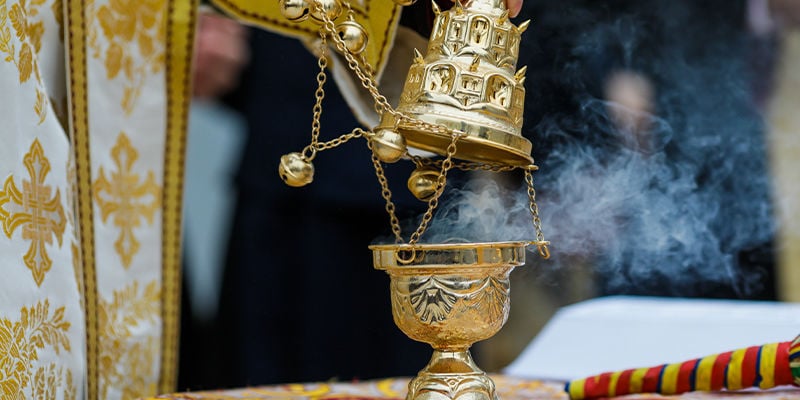
The incense trade reached its peak when the Incense Road reached the Greeks and Romans. Eastern Christian churches adopted incense for purification rituals and prayer, and the Roman Catholic Church soon followed suit. The incense business in Europe waned soon after the fall of Rome. Ceremonial burning of resins and gums can still be found in some Orthodox and Catholic churches. Incense used in these religious ceremonies is typically burned in a censer—a covered vessel swung on chains.
The Americas
Indigenous communities in what is now North America also used incense. Many still practise a special kind of rite called smudging. Smudging is a purification ritual known as the "sacred smoke bowl blessing". It is an integral part of life, done before every healing, public gathering, powwow, and sweat lodge. Found in the smoke of the plant is the "sacred plant helper" that drives away negative energy, heals, blesses, and restores balance. Common plants for smudging are cedar, sage, sweet grass, and tobacco.
How incense is made
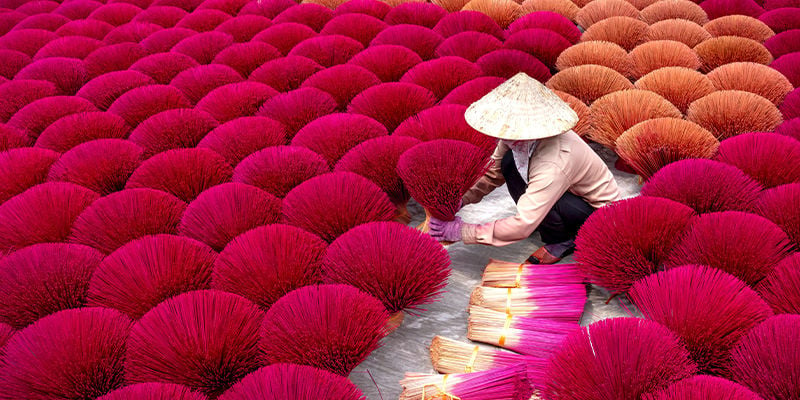
Customs in incense manufacturing have remained relatively stable over the centuries, while the range of fragrances has expanded.
India was the first to create a uniform and codified system of incense-making. They categorised incense into five classes: fruit, water, fire, earth, and air. Incense was originally produced by monks and is still strongly linked to Ayurvedic aromatherapy healing practices.
In China, incense-making became an esteemed art form along with tea-making and calligraphy. Today, incense paste is still shaped into Chinese characters or burned in complex patterns believed to bring good fortune.
Incense production
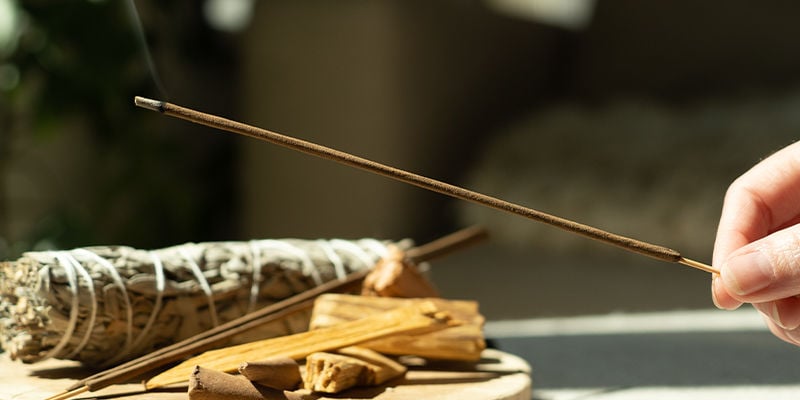
Incense is typically made from organic matter. Direct burning incense types, such as sticks and cones, are made from a combination of fragrant materials plus a combustible base and binders.
Fragrant materials
Fragrance may come from ground-up organic material like woods, barks, leaves, resins, or from essential oils. Materials that have remained popular for centuries include cassia, cinnamon, styrax, cedar, and sandalwood. Yet, those are just a few of the myriad scents available; today, one can find fragrant incense for any preference or occasion.
Combustible base and binders
During incense production, fragrance is added to a base made from combustible materials, such as charcoal or wood powder. Gums act as a binding agent to hold the mixture together, while an oxidiser like sodium nitrate is used to sustain burning.
In some cases, plant-based binding powders are used instead. Viscous material from botanical sources is mixed with fragrance and a small amount of water. Natural cellulose acts as a combusting agent to help create a stable ember. One of the most popular plant-based binders is made from the bark of the tabu-no-ki tree (Machilus thunbergii).
Shaping and dryingcoii
Mixing the above elements creates a paste that can be shaped around "punk sticks" — the wooden core in some incense sticks, usually made from bamboo. In some cases, the incense mixture is extruded or pressed into shapes: cones, coils, coreless sticks, or other forms. The incense is then dried before being ready to burn.
Why use incense?
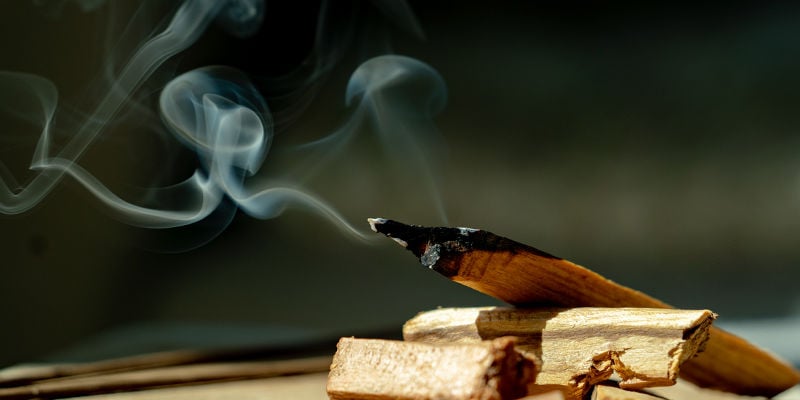
As its sustained and diverse use suggests, burning incense has various applications in the modern era. Alongside ceremonial uses, incense can be used by anyone to enhance a space and influence the mood.
Potential benefits of using incense
Aromatherapy has been used for thousands of years as a natural remedy for tension. Here are some of the ways in which incense can be used to improve your life.
Reduce stress and improve sleep
One scent well-loved for its relaxing properties is lavender, which can be found in everything from incense to bath bombs. A 2018 study performed on mice suggests that lavender may exert a soothing effect on the central nervous system (Harada et al., 2018). Researchers found that linalool—a potent terpene in lavender—activates GABA receptors via olfactory neurons in the nose. So, if you've been feeling tense or struggling to sleep at night, try lighting some lavender incense. Other fragrances associated with relaxation and sleep include sandalwood, rosemary, and chamomile.
Purify your space
Incense is a fast and convenient way to mask unwanted smells from cooking, animals, or—as dedicated stoners know—weed. To camouflage the skunky aroma of your latest bong session, go for sandalwood, cedar, or patchouli incense, or take advantage of a modern fragrance mixture. If you'll be chilling outdoors, incense made from materials like citronella can help to repel mosquitoes and other bothersome insects.
Increase mindfulness
Incense is often employed in spiritual ceremonies to encourage concentration, stimulate the senses, and uplift the spirit when meditating. Sandalwood, lotus, and nag champa—a fragrance of Indian origin—are common choices for yoga and meditation. Whichever scent you choose should help to centre you, without being overwhelming or intrusive. Set your intentions through the ritual of mindfully selecting, preparing, and lighting your incense.
Stimulate creativity
Of all our senses, smell can carry some of the strongest associations. The right fragrance can trigger a certain memory or raise our spirits and inspire us. Many artists use aromatherapy to create an ideal atmosphere in their workspace or studio. To help get your creative juices flowing, burn incense like citrus, geranium, and ylang-ylang.
What are the different types of incense?
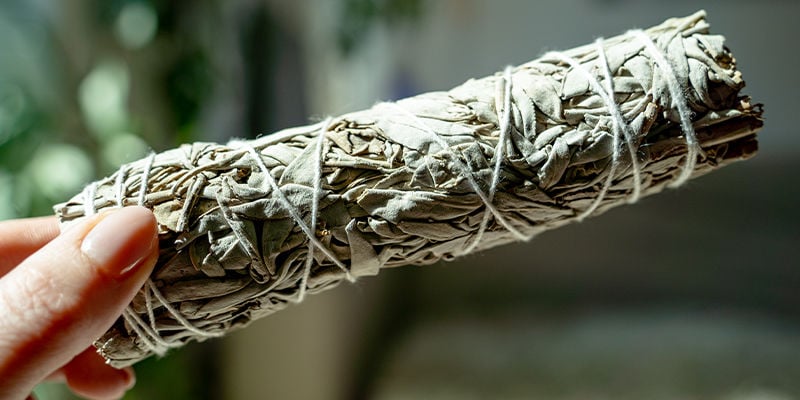
While incense comes in many different forms, it can be categorised into two main types: direct and indirect burning incense.
Direct burning incense is the most common. Aromatic substances are mixed with combustible material, allowing this type of incense to burn on its own. It is directly ignited before the flame is extinguished, leaving a glowing ember that slowly releases a trail of aromatic smoke. Common forms of direct burning incense include sticks, cones, coils, and powders.
Indirect burning incense, on the other hand, requires an external heat source to burn, typically a piece of charcoal. The charcoal is placed on a metal plate or in a censer, insulated with a layer of sand or ash. The incense itself directly touches the charcoal. It may be finely ground and rapidly burning, or come in coarser chunks, which tend to burn more slowly. Common examples of indirect burning incense include resins like frankincense and myrrh, powdered incense, and kneaded incense.
Incense sticks vs cones
Two of the most common forms of incense are sticks and cones. Both are direct burning, but incense cones and sticks have subtle differences. Incense holders for both types can range from simple and minimalist to elaborate and ornamental, with plenty of options to match your vibe and aesthetic.
Incense sticks
Incense sticks are by far the most common form of incense in the West. They are often made with a bamboo core, though more expensive varieties may be made with a sandalwood core. Wrapped around the core is a mix of essential oils and charcoal dust or sawdust. Solid stick incense, without a core, is known as dhoop stick. Dhoop sticks are easily broken and portioned into smaller pieces. They are the most common type of incense in Japan and Tibet.
Incense sticks typically:
- Burn slowly and evenly
- Last around 45 minutes
- Release a lighter scent
- Require a long mat or tray to catch falling ash
- Come with a wooden core, or as coreless dhoop sticks
Incense cones
Incense cones are made from a mix of essential oils and combustible powders hardened and formed into a conical shape. Ingredients are similar to incense sticks, but the shape causes them to burn a bit differently. Incense cones are another form of dhoop—they are moulded without a wooden core.
Incense cones come in regular or backflow varieties. With backflow incense, rather than smoke trailing upward, it moves downward through a hole in the centre of the cone. Backflow incense cones sit on top of special incense holders that pull the smoke downward. Some of them are really elaborate, coaxing the smoke into psychedelic patterns or making it appear as a stream of water flowing over rocks.
Incense cones typically:
- Burn more quickly
- Last around 20 minutes
- Release an intense fragrance
- Are easier to clean as ash stays localised around the cone
- Come in regular and backflow varieties
Incense: Available to tantalise your senses now
Scents have the power to influence our mood, trigger positive memories, and inspire creativity. Whether you're meditating, relaxing, connecting spiritually, or just want your space to smell nice, there is a variety of incense for you.
So, select your favourite incense stick or cone, place it in a beautiful incense holder, and light that spark. Let the fragrance envelop you and relax into it, knowing you're sharing in a ritual that humans have been practising for thousands of years.
- Harada, Hiroki, Kashiwadani, Hideki, Kanmura, Yuichi, Kuwaki, & Tomoyuki. (2018/10/23). Linalool Odor-Induced Anxiolytic Effects in Mice - https://www.frontiersin.org
Incense
you might also like




 Seedshop
Seedshop Headshop
Headshop Vaporshop
Vaporshop Healthshop
Healthshop Smartshop
Smartshop Shroomshop
Shroomshop Plantshop
Plantshop United States
United States

